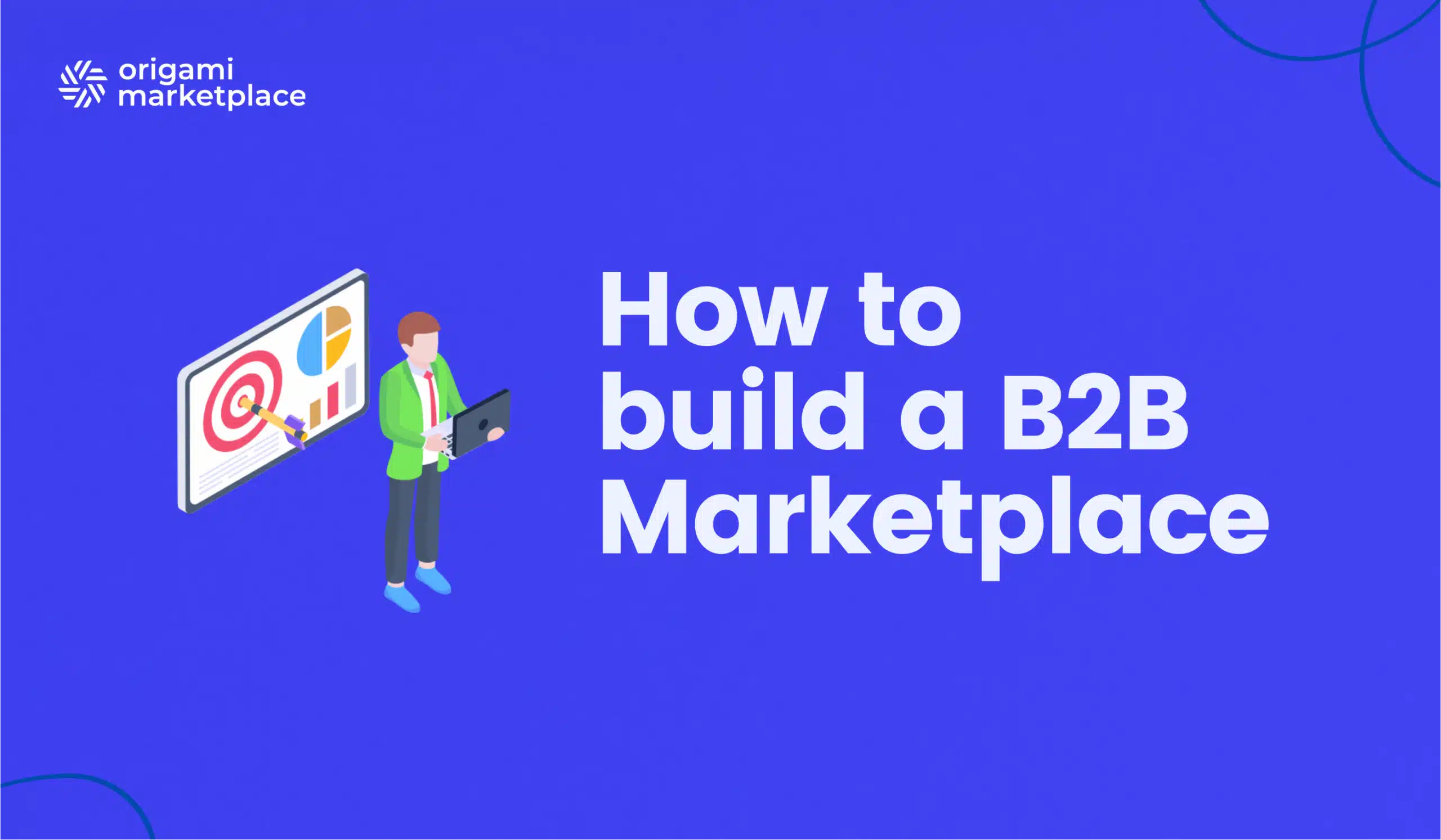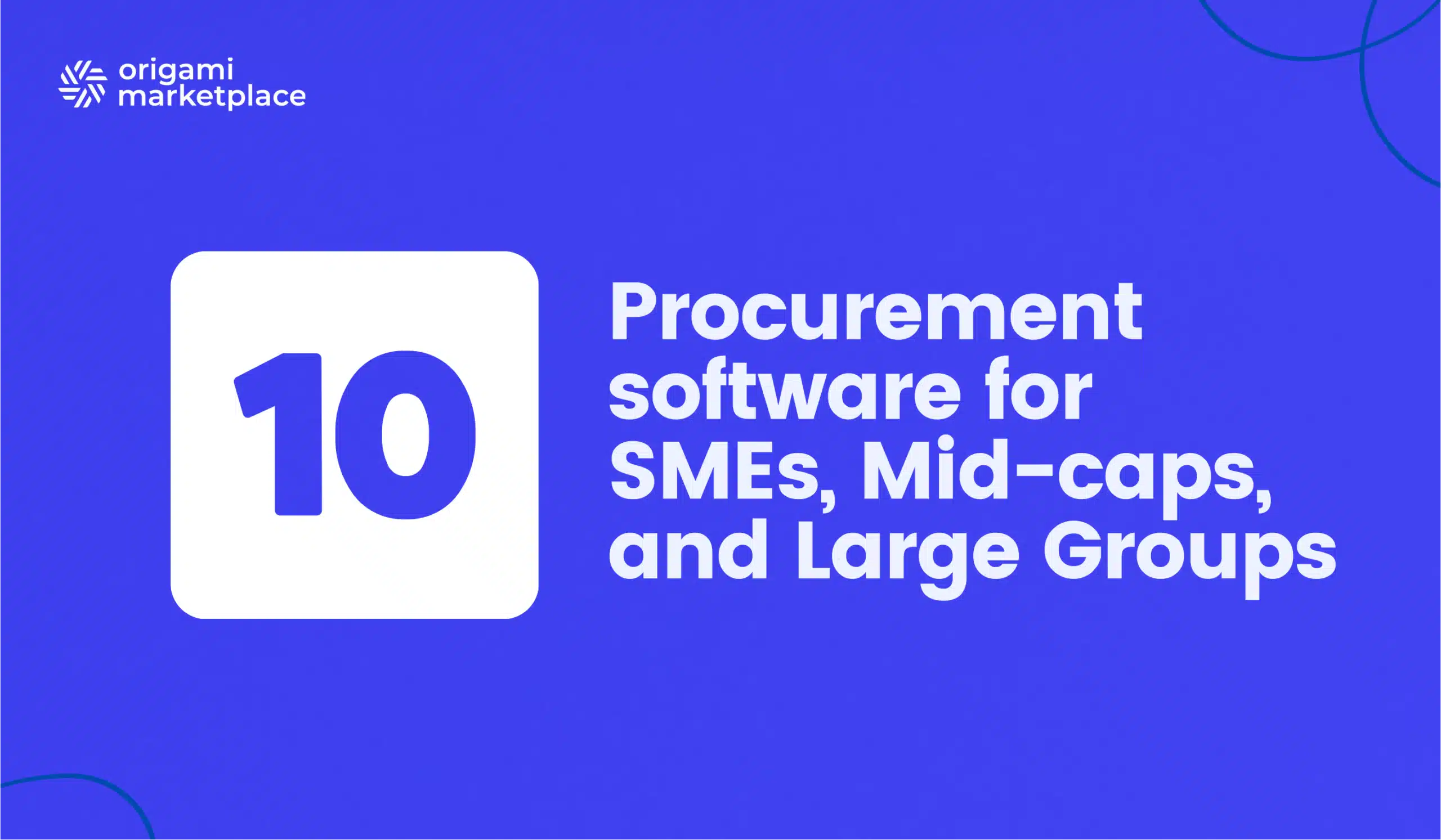How to build B2B marketplace from scratch: Ultimate 2025 guide
- Arnaud
- 5 minutes reading

Building a B2B marketplace in the digital age has become crucial for connecting businesses across various industries. These platforms streamline procurement, supply chains, and transactions, delivering value to both buyers and sellers. If you’re wondering how to build a B2B marketplace, this guide will walk you through every essential step, from initial concept to launch and scaling.
Ultimate guide: How to build a successful B2B marketplace
1. Understanding the B2B marketplace model
2. Exploring different types of B2B marketplaces
3. Key feature integration for a B2B marketplace build
4. Business models and monetization strategies for B2B marketplaces
5. Overcoming challenges in building a B2B marketplace
6. Ensuring security and data protection in your B2B marketplace
7. Crafting a marketing and growth strategy for your B2B marketplace
8. Scaling for long-term success in B2B marketplaces
9. How to choose the right agency to build your B2B marketplace
1. Understanding the B2B marketplace model
A B2B marketplace is a digital platform that enables businesses to buy and sell products or services. Unlike B2C (Business-to-Consumer) platforms, B2B marketplaces handle more complex transactions, such as bulk orders and long-term contracts. The key industries using B2B marketplaces include manufacturing, wholesale, logistics, and professional services. A successful platform should cater to the specific needs of these industries, such as contract management, bulk purchasing, and price negotiations.

2. Exploring different types of B2B marketplaces
When build a B2B marketplace, it’s important to understand the different types to decide the best structure for your platform:
Vertical B2B marketplaces
These marketplaces focus on a specific industry or niche, offering products, services, or solutions tailored to the unique needs of that market. They enable businesses to streamline their procurement processes by providing access to specialized offerings. For example, a marketplace dedicated to the pharmaceutical industry would offer raw materials, specialized equipment, or logistics services specifically suited to that sector. By targeting a specific segment, these platforms foster better alignment between buyers and sellers, ensuring a more precise match of offerings to market needs.
Horizontal B2B marketplaces
These platforms cater to multiple industries by offering a broad range of products and services. Unlike vertical marketplaces, horizontal B2B marketplaces allow businesses to access various product and service categories, regardless of their sector. This enables buyers to streamline their procurement processes by using a single platform for a wide range of needs. A common example would be a marketplace that provides office supplies, industrial maintenance services, and IT solutions, allowing businesses to optimize their supply chains and reduce costs by consolidating their purchasing across multiple categories.
Product-Based marketplaces
These B2B platforms specialize in physical goods like Amazon Business, offering features like bulk ordering, inventory management, and logistics support. They cater to businesses that need to source large quantities of products, providing tools to simplify procurement and supply chain management. These marketplaces often offer industry-specific product categories, ensuring that businesses can access the exact materials or components they need in large volumes. A well-developed product-based marketplace helps companies optimize their inventory levels, reduce procurement complexity, and gain competitive pricing through bulk purchasing.
Service-Based marketplaces
Service-oriented B2B marketplaces focus on connecting businesses with service providers. These platforms are ideal for companies looking to outsource specific tasks or find experts in areas such as consulting, marketing, IT services, or skilled labor. Examples include platforms like Fiverr for Business, where enterprises can connect with freelancers or agencies to fulfill service needs efficiently. These marketplaces often provide transparent pricing, performance reviews, and project management tools, allowing businesses to select the best providers and manage contracts and deliverables smoothly.
Hybrid marketplaces
Hybrid marketplaces offer both products and services, addressing a wide array of business needs by combining physical goods with complementary services. For instance, a marketplace might offer machinery alongside installation, maintenance, or consulting services, enabling businesses to access comprehensive solutions through a single platform. This model is particularly valuable for industries where products and services are closely linked, offering convenience and a one-stop solution for businesses seeking end-to-end procurement options.





3. Key feature integration for a B2B marketplace build
A successful B2B marketplace or an e-procurement platform must integrate essential features to ensure user satisfaction and streamline transactional processes. Key features to consider include:
Analytics dashboards: Provide users with customized dashboards that display important performance metrics such as sales, order numbers, and revenue trends. This feature helps businesses manage their operations more effectively by giving them actionable insights into their marketplace activities.
Third-party software integrations: Seamlessly integrate with widely used tools such as inventory management systems, CRM platforms, and accounting software. These integrations enhance efficiency for users, allowing them to manage their business processes without leaving the marketplace environment.
Secure payment features: Implement trusted payment processors like PayPal, Stripe, or other industry-specific platforms to handle transactions securely. Ensure the payment process is easy, reliable, and equipped with high-level encryption to safeguard high-volume B2B transactions.
Communication tools: Offer direct messaging capabilities between buyers and sellers. This feature enables users to negotiate, ask questions, or clarify order details, improving collaboration and reducing the need for external communication tools.
Advanced search system: Include a powerful search engine with multiple filters (e.g., price, location, product type, supplier rating) to help users quickly find specific products or services. An intuitive search system enhances user experience by making it easy to discover relevant listings.
Inventory and order management features: Provide businesses with tools to manage their stock, track orders, and process bulk transactions in real time. For wholesale businesses, these features are essential to efficiently handling large-scale orders and monitoring inventory levels across different markets.
By incorporating these features, your B2B marketplace will offer a seamless, user-friendly experience that meets the needs of buyers and sellers, promoting long-term success and engagement. Not sure which features you need? Visit our page dedicated to essential features for a B2B marketplace.
Ready to build your B2B marketplace?

4. Business models and monetization strategies for B2B marketplaces
To sustain your B2B marketplace, a solid monetization strategy is crucial. Here are common approaches:
Freemium models: Provide free basic access to attract users, then charge for premium features like advanced analytics, enhanced visibility, or marketing tools. This model encourages users to upgrade as their needs grow.
Listing fees: Charge businesses to list their products or services. This is especially effective in niche markets where visibility is valuable, ensuring a steady revenue stream from suppliers seeking exposure.
Transaction fees models : Take a percentage from each transaction made on the platform. This model aligns revenue with platform usage and encourages scaling.
Advertising: Allow businesses to pay for greater visibility through ads or sponsored listings. This provides an additional revenue stream while helping sellers boost their exposure.
Partnerships: Form strategic partnerships with complementary service providers, such as payment gateways or logistics companies, to generate affiliate or commission-based revenue streams. This enhances platform value while creating new income opportunities.
These strategies can be tailored and combined to suit the unique needs of your marketplace, ensuring sustained growth and profitability.
Download our free B2B marketplace specifications template.
Here you will find all the essential features to succeed in your B2B multi-vendor marketplace. This model provides a simple backlog to guide you through each step of your project.
5. Overcoming challenges in building a B2B marketplace
Here’s an enhanced version of your list, focusing on common challenges for B2B marketplaces:
Acquiring buyers and sellers: A marketplace’s success depends on building a robust ecosystem of buyers and sellers. To kickstart this growth, consider launching with exclusive deals or incentives that attract early adopters. These offers can create the necessary network effects that drive engagement, leading to increased activity and organic growth.
Building trust: Trust is critical in B2B transactions. Implement secure payment systems, such as escrow services, to protect both parties. Additionally, introduce clear dispute resolution mechanisms to address any issues that arise, providing confidence to users that their transactions are safe and fair.
Managing logistics: Efficient logistics are essential for fulfilling orders and maintaining customer satisfaction. Partnering with third-party logistics providers (3PLs) can help streamline shipping, warehousing, and inventory management. This approach allows your marketplace to offer reliable and scalable logistics solutions without having to manage these complexities in-house.
Regulatory compliance: Navigating legal and regulatory requirements is a significant challenge in global B2B marketplaces. Ensure compliance with local, national, and international regulations, including data privacy, trade restrictions, and industry-specific laws. Staying compliant helps avoid legal risks and builds credibility with businesses operating in highly regulated environments.
These challenges require strategic planning and investment but can be effectively addressed to ensure the marketplace’s growth and sustainability.
6. Ensuring security and data protection in your B2B marketplace
Given the scale and sensitivity of B2B transactions, ensuring robust security measures is essential. Key practices include:
Data encryption: Implement SSL encryption for all transactions to protect sensitive information and prevent unauthorized access. This ensures that data exchanged between buyers, sellers, and the marketplace remains secure, safeguarding financial details and other confidential data.
Regulatory compliance: Ensure your platform complies with critical data privacy regulations such as the General Data Protection Regulation (GDPR) in Europe and the California Consumer Privacy Act (CCPA). Meeting these regulatory requirements protects users’ data, strengthens your reputation, and helps avoid costly legal consequences.
Fraud prevention: Deploy advanced fraud detection tools and secure payment gateways to monitor and mitigate fraudulent activities in real-time. Leveraging AI-based algorithms and secure payment infrastructure ensures that transactions remain legitimate, building trust with both buyers and sellers.
Regular audits: Conduct regular security audits, penetration tests, and vulnerability assessments. These proactive steps help identify and resolve any potential security risks before they are exploited, ensuring your platform remains compliant and secure against evolving cyber threats.
By prioritizing these security practices, your B2B marketplace can protect sensitive transactions, maintain regulatory compliance, and uphold a high standard of trustworthiness among users.
7. Crafting a marketing and growth strategy for your B2B marketplace
A strong marketing strategy is crucial to attract buyers and sellers to your B2B marketplace. Key tactics include:
SEO Optimization: Optimize your marketplace for search engines by incorporating relevant keywords and long-tail phrases that reflect the needs of your target audience. Ensure product pages are well-organized, searchable, and feature accurate meta descriptions to improve visibility in search results. This helps your marketplace attract organic traffic from decision-makers actively searching for solutions.
Content marketing: Develop high-quality, industry-specific content like blog posts, case studies, white papers, and guides. These resources help position your marketplace as a thought leader and build trust among potential users. Content marketing also supports your SEO efforts by driving traffic and improving your authority in search rankings.
Paid ads: Use targeted advertising campaigns on platforms like Google Ads, LinkedIn Ads, and industry-specific websites to reach your ideal audience. Focus on decision-makers and key stakeholders in your target industries, using ads that highlight your marketplace’s unique value proposition to drive conversions.
Referral programs: Encourage your existing users to invite new buyers and sellers by offering incentives such as discounts, credits, or other rewards. A well-structured referral program can expand your marketplace’s user base organically, leveraging word-of-mouth marketing to build trust and attract new participants.
By combining these strategies, you can effectively increase the visibility and credibility of your B2B marketplace, driving growth and engagement among buyers and sellers.
The team's advice 🎓
To ensure a seamless and engaging experience on your B2B marketplace, user interaction should be simple and efficient. Here are two elements to consider:
• Built-in messaging system: Facilitate communication between buyers and sellers directly on the platform, avoiding the need for external channels. This centralizes interactions and builds trust.
• User-friendly navigation: Intuitive navigation is essential so users can easily find what they need. Implement systems like breadcrumb trails or advanced search pages to enhance the user experience.
By integrating these elements as we do at Origami Marketplace for our customers, you’ll create an environment that fosters user engagement and satisfaction.
8. Scaling for long-term success in B2B marketplaces
Once your marketplace starts gaining traction, it’s crucial to focus on scaling for long-term success. Key strategies include:
Global expansion: As you enter new markets, offer multi-language support and adapt to local regulations to ensure compliance in each region. Implement multi-currency features to accommodate international buyers and sellers, simplifying cross-border transactions and enhancing the user experience.
Automation: Automate essential processes like invoicing, onboarding new users, and dispute resolution. This reduces manual workload and ensures your platform can handle an increasing volume of transactions efficiently. Automation also improves scalability by allowing your marketplace to grow without compromising service quality.
Continuous feedback: Regularly gather feedback from both buyers and sellers to identify areas for improvement. Use this input to refine platform features, enhance user experience, and address emerging needs. Continuously iterating based on user insights ensures your marketplace remains competitive and user-focused as it scales.
By focusing on these strategies, you can ensure sustainable growth and adaptability as your marketplace evolves.
9. How to choose the right agency to build your B2B marketplace
There’s no one-size-fits-all agency because every B2B marketplace is a unique project. While many solutions share common foundations, it’s essential to partner with an agency that truly understands your specific needs and challenges. The right partner will customize the solution through tailored developments to meet your exact requirements. At Origami Marketplace, this is the foundation of our approach.
Building a successful B2B marketplace involves key steps—from selecting the right marketplace model and business strategy to tackling technical and operational challenges. With the right technology, clear business goals, and a strategic marketing plan, your marketplace can evolve into a powerful digital platform that fosters meaningful business connections.
👋 Future online marketplace operator!
Discover how the Origami Marketplace API and partner network can transform your business, regardless of size, with its innovative solution based on the marketplace model.



